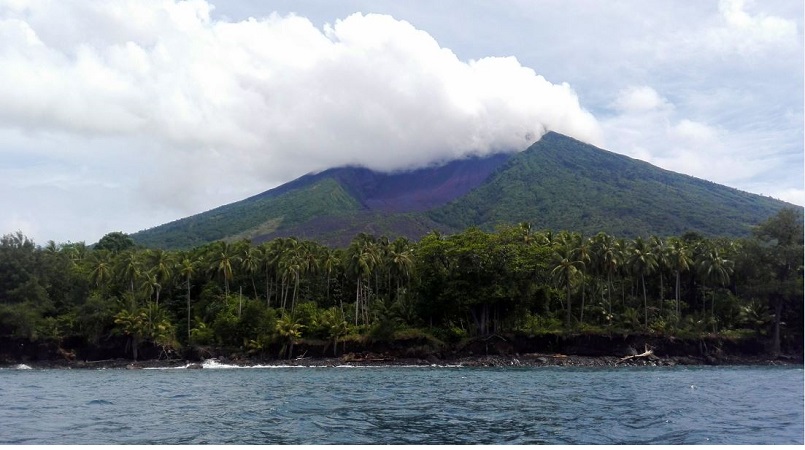
Key Government officials and representatives of humanitarian community, met on Friday May 12 at the National Disaster Centre to test a new framework designed for planning and managing recovery from disasters in Papua New Guinea.
As demonstrated by the ongoing volcanic eruption of Manam Island in Madang Province, PNG is prone to regular natural disasters. The country faces a steady threat from a wide range of hazards including floods, cyclones, landslides, drought, earthquakes, among others.
The volcano on Manam Island began spewing heavy smoke from the crate over the past week causing more than 700 villagers to flee the island.
To ensure the country can rapidly and successfully recover from a natural disaster, the draft ‘Disaster Recovery Framework’ was developed by the National Disaster Centre (NDC) with the technical support from United Nations Development Programme (UNDP) and put to test on Friday in a simulation exercise.
“The Disaster Recovery Framework is key to ensure Papua New Guinea can efficiently respond to a large-scale disaster at a national level - this could be an event which affects several provinces or contributes to a significant loss of life or basic services,” said Roy Trivedy, UN Resident Coordinator and the Co-Chair of the Disaster Management Team in Papua New Guinea.
The Framework outlines the key tasks necessary to ensure PNG can successfully recover from a disaster including co-ordination, planning and implementation, funding, the management of recovery tasks and lead and support organisations who would implement recovery operations.
The workshop started with a review of the Framework contents, followed by a table top exercise simulating a major cyclone and heavy rainfall affecting Milne Bay, Oro and Morobe provinces and the National Capital District.
The combination of the review and simulation provided an intensive practical evaluation of the contents and usefulness of the Framework and identified options to further improve recovery planning in PNG.
The Framework incorporates good practices from PNG and globally, and is designed to build national-level capacity to address disasters which exceed provincial capacities or affect more than one part of the country at the same time. It also focuses on ensuring more attention is paid to the longer-term challenges of recovery so that disasters don’t have a negative impact on the development of the country.
“During a disaster – we’re in an emergency and there’s lots to do and many players involved and it can be very confusing and chaotic, said Martin Mose, Acting Director of the National Disaster Centre (NDC).
“It’s very important that this framework has been developed and is being tested because it provides us with a clear path forward, enabling us to work as a team, reduce wastage and duplication and work in a much more coordinated and efficient way,” Mose said.
Stakeholders attending the workshop in Port Moresby today included the NDC, Office of the Prime Minister and National Executive Council, Department of Agriculture and Livestock, Foreign Affairs, PNG Defence Force, Department of Community Development, Department of Health, Internal Revenue Commission, National Weather Service, Disaster Coordinators from Western Highlands Province and the Autonomous Region of Bougainville, PNG Red Cross, Disaster Management Team members, International Organization of Migration, World Vision and the World Bank.
Following Friday’s activities, the NDC and UNDP plan to refine the Framework for use at the provincial level and conduct similar workshops in selected provinces. The development of the National Recovery Framework is part of the Disaster Risk Management Project, jointly implemented by NDC and UNDP with funding provided by Australian Government. UNDP is one, if a number of UN agencies which are working on projects to improve PNG's response and recovery from disasters.
Picture: Manam Island volcano eruption in Madang Province is an example of one of the many natural disasters that affect PNG. Picture Courtesy: National Disaster Centre
Press Release
